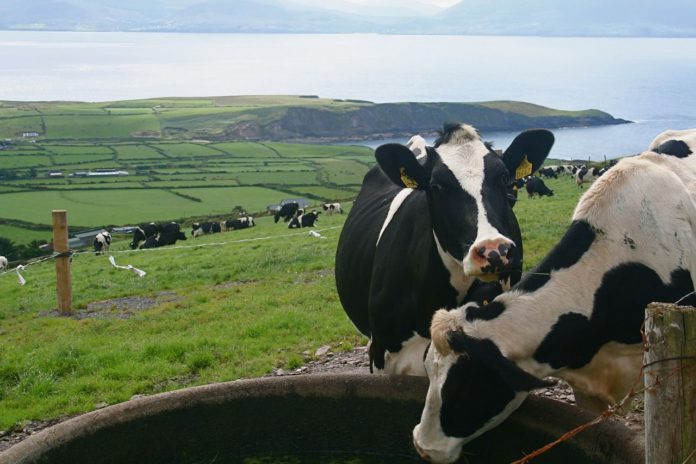In this article, That’s Farming looks at the importance of changing and choosing your liners for your dairy parlour.
We discuss choosing your liner material, the benefits of changing your liners, the implications of unsuitable liners and getting the most from your liners.
Interestingly, the milk liner is the only section of the milking machine that is in direct contact with cows. Therefore, the condition of this equipment is vital for animal health and machine efficiencies.
Over a period of time, liners can act as a reservoir for bacteria, retain fat and also loose structure.
According to Animal Health Ireland, the longevity of liners decline with the routine washing of the parlour. In turn, the interior surface of the liner becomes damaged, making the disinfection process a lot more difficult.
This also increases the potential of cross-contamination between animals in the milking parlour.
The dairy industry recommends changing liners after 2,500 milkings, or every six months, whichever is first.
According to Teagasc, should you not replace your milk liners after such a period, your herd will incur a 5% reduction in milk yield.
To calculate when you should replace your milk liners: divide the number of milking cows by the number of units. Then, multiply this answer by 2.
Divide your answer into 2,500, and you will calculate the number of days that you can use your liners for.
Choosing a liner material
When selecting a liner material, you should consider how long you want the liners to last and your performance criteria for the herd.
You can purchase natural and synthetic rubber, and silicone rubbers.
However, you should note that synthetic rubbers have more longevity in comparison to natural rubber liners.
Moreover, liners made from silicone are known to have a longer milking life, with resistance to fat absorption.
In addition, silicone rubbers have been known to be more successful in terms of milking performance.
Reduced milking time
During peak season, milking times tend to increase when maximum yields have been achieved across the herd.
By deciding to change liners, you will be provided with a quicker milking routine.
As a result of this reduced time, there is less energy used on the farm.
In addition to this saving, there is a reduction in stress on cows and an increase in time for them to feed.
Lower somatic cell count
At the end of calving, changing the liners on your milking machine has the ability to reduce the risk of a high somatic cell count (SCC).
Furthermore, introducing new liners during this period can improve general teat and udder health throughout the dairy herd.
By introducing new liners with fewer cracks and damage, there is minimal risk of bacteria entering the milk, creating further financial implications for your milk cheque.
Different liners for different settings
Different liners create a different environment for the cow when milking. Thick-walled, rubber liners provide the capacity for a fast milking; comparatively, soft silicone liners provide a more gentle process.
Moreover, vacuum settings can adopt the speed and intensity of milking.
A higher tension of a liner will provide your herd with a faster milking time.
However, this results in greater pressure to the teat, which correlates with an increased risk of mastitis.
Moreover, various shell sizes will determine how much the liner is stretched. The longer the shell, the more the liner is stretched. In turn, this increases the tension of the milking process.
Priorities for your dairy herd
Ultimately, you should decide what your herd priorities and performance criteria are when it comes to the properties of your liners.
Increasing milking speed, presence of high flow-rate cows, good stimulation of milk let-down and udder health are some parameters you may consider when choosing liners for your milking parlour.
High-tension rubber liners provide a faster milking time. It should be noted that these round-bodied liners can create implications for udder health, unless intervention is carried out.
For dairy producers who are happy with a more gentle milking process, there is an option to include low-tension, silicone liners.
Consider the fit of your liners
Liners which are poor fitting will eventually lead to inefficiencies within the milking parlour, in terms of both financial and herd performance.
Investigate liners which are fitted with holes to vent the mouthpieces.
This will prevent the vacuum being higher at the top of the teat than at the teat end at the end of milk. In turn, this will also reduce the risk of bacteria entering the teat.
To identify a liner, which is considered to be a good fit, the teat should separate the barrel from the mouthpiece.
A liner which has an extremely deep mouthpiece indicates signs that the teat does not fit the barrel. In turn, this will cause the mouthpiece vacuum to rise to harmful levels.
Moreover, an excessively wide barrel in which is not filled by the teat also causes the mouthpiece vacuum to rise to dangerously high levels.
How to get the most from your liners
When purchasing liners, make sure you have your measurements correct. The liner tailpiece should be the right size for your milking claw.
Before commencing milking, have a quick look at the claws, and ensure there are no visible sharp edges. The presence of sharp edges will cause damage on the short milk tube.
After cleaning, consider removing the liner from the jetters. By not doing so, you’ll end up with a mouthpiece distortion.
With cleaning, ensure you are using chemicals which will not influence the quality or longevity of liners.
Moreover, assess the temperatures you are using to wash, and remember, that cold water will not remove a build-up of butterfat.
The presence of sun and UV light also has a direct impact on the quality of liners, so ensure to protect them as best as possible.
Other articles on That’s Farming:





